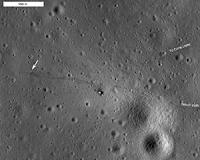 |
Tokyo (AFP) Feb 17, 2011 Japan's space agency is planning a mission to send a humanoid robot to space so that it can communicate with people on Earth through Twitter, an agency official said Thursday. The Japan Aerospace Exploration Agency (JAXA) plans to carry out feasibility studies before making a final decision to send the robot to the International Space Station (ISS) as early as 2013, the JAXA official said. Under the project, the Japanese-made robot is expected to stay in the ISS to help communicate with Earth while, for example, astronauts are asleep, according to JAXA engineer Satoshi Sano. The robot is also expected to take pictures and send messages through microblog site Twitter, Sano said, adding that it can "tweet" simple words such as "good morning" and "good night" as well as indicate its location above Earth. The robot will also analyse astronauts' stress levels by detecting changes in their tone of voice and facial expressions, which will be used to study the effectiveness of stress relief measures. "As the society is greying, I hope this project will lead to (creating a system) to facilitate communications with elderly people isolated in remote places and with family members through a robot," Sano said. The University of Tokyo and advertising agency Dentsu will also take part in the project. NASA plans to send a humanoid robot of its own, developed with General Motors, to the ISS on board the space shuttle Discovery on February 24 to support astronauts' operations. Japan leads the world's robotic industries in fields ranging from manufacturing to entertainment and security. Toyota and Honda have already unveiled several types of humanoid robots.
Share This Article With Planet Earth
Related Links Mars News and Information at MarsDaily.com Lunar Dreams and more
 LRO Could Have Given Apollo 14 Crew Another Majestic View
LRO Could Have Given Apollo 14 Crew Another Majestic ViewGreenbelt MD (SPX) Feb 09, 2011 Although the Apollo 14 mission to the moon was filled with incredible sights and was completely successful - it met all its science goals - the crew experienced a bit of a disappointment at missing the spectacular view from the rim of a 1,000-foot-wide crater. They might have gazed into its depths if they had the high-resolution maps now available from NASA's Lunar Reconnaissance Orbiter ( ... read more |
|
| The content herein, unless otherwise known to be public domain, are Copyright 1995-2010 - SpaceDaily. AFP and UPI Wire Stories are copyright Agence France-Presse and United Press International. ESA Portal Reports are copyright European Space Agency. All NASA sourced material is public domain. Additional copyrights may apply in whole or part to other bona fide parties. Advertising does not imply endorsement,agreement or approval of any opinions, statements or information provided by SpaceDaily on any Web page published or hosted by SpaceDaily. Privacy Statement |